Brunel Estate Landscape: The essence of Michael Brown

In this guest post, Colin Moore, CMLI, provides some insight into the Michael Brown landscape at the London W2 Brunel Estate. Colin is a Chartered Landscape Architect and Urban Designer who worked as a Clerk of Works for Michael Brown Partnership for a year in 1973-4 and subsequently part-time for 2 years while studying for the MA in Landscape Design at Sheffield University. The Michael Brown archive is part of the Landscape Institute archive which is housed at The MERL, and Colin is currently secretary of FOLAR, the Friends of the Landscape Archive.
The 2019 FOLAR Annual Symposium is Landscape and Children: Design for Children’s Play and includes a presentation on Michael Brown’s work with children by Dr Luca Csepely-Knorr and Dr Amber Roberts of Manchester Metropolitan University. There will be an exhibition of drawings including some from Michael Brown’s collection accompanying the symposium. It will be held on 16 March 2019 at The MERL. For the detailed programme and how to book see the FOLAR website.
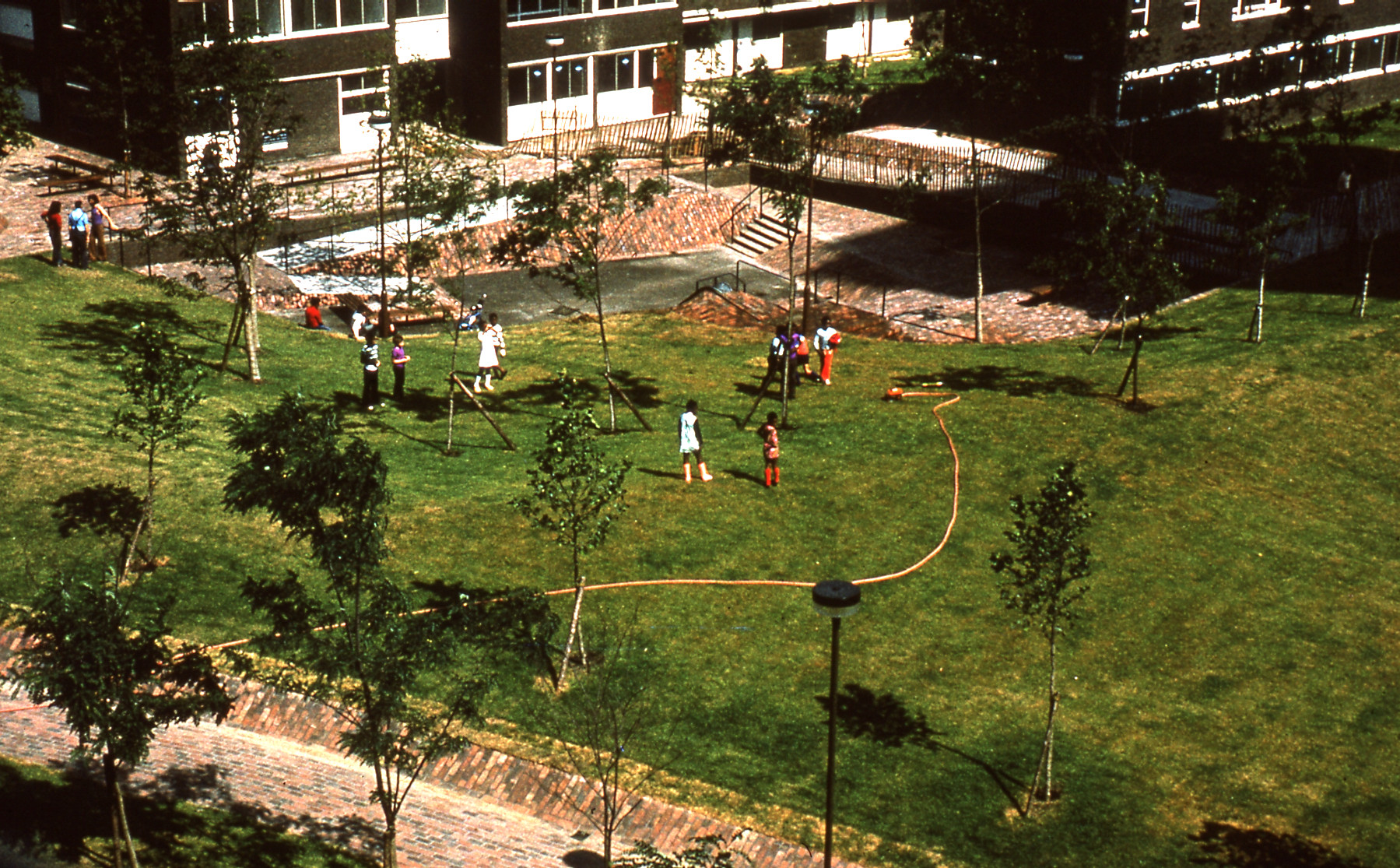
The Brunel Estate landscape perfectly illustrates Michael Brown Partnership’s mastery of the design and detail of landscape brickwork. It also illustrates his expertise at manipulating landform and levels to create interlinked enclosed spaces within the landscape.
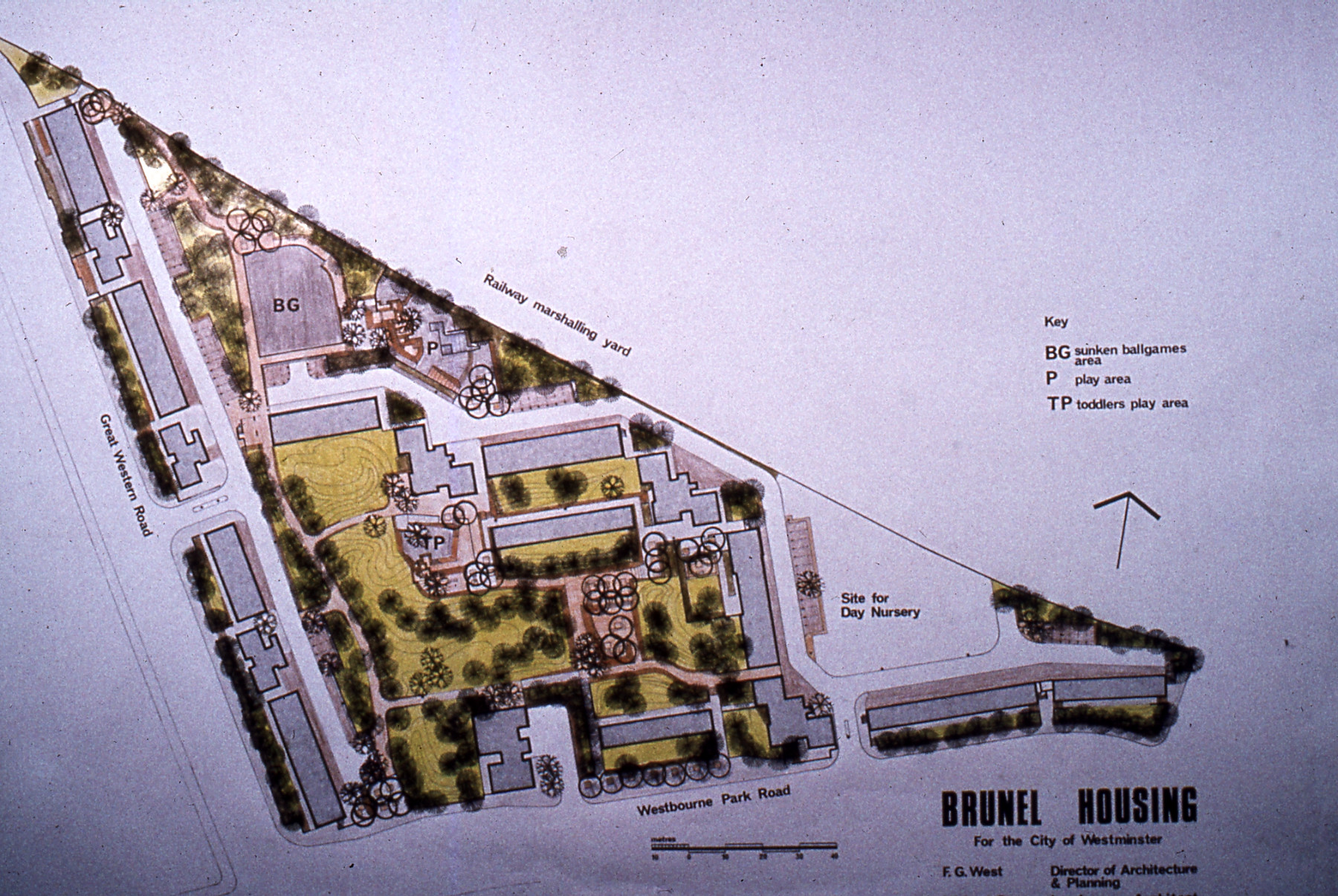
The Brunel council housing estate was completed by 1974 and is typical of its time. It includes a tower block, 4 and 5 storey slab blocks with 2 and 3 storey terraces, totalling 418 homes with extensive landscaped areas between the buildings. It is a triangular site located west of Paddington station, with Westbourne Park Underground Station at the north-west corner. The north-east boundary is a transport corridor barrier comprising overground Underground lines, main railway lines to/from Paddington, the Westway and Grand Union Canal
The landscape has generally survived very well with a high standard of maintenance. One play area has been replaced, the trees have been thinned, seats and benches replaced and some of the details modified (e.g. around the trees). The larger play area for older children is still there.
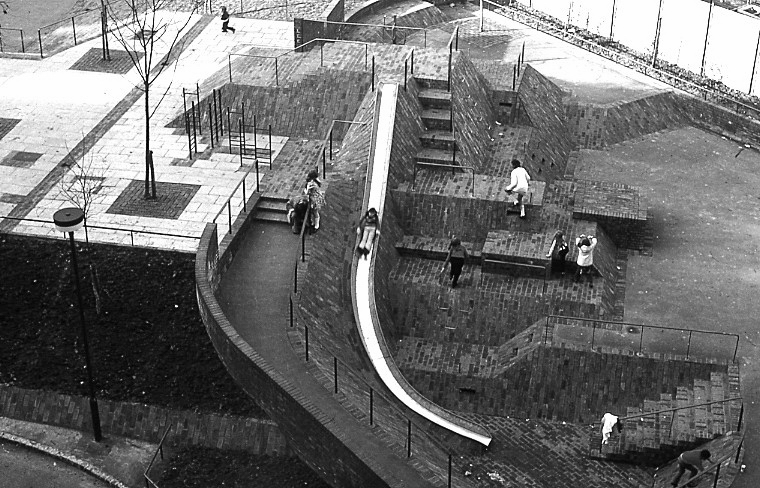
It would not be possible to create such a playground now because of increased concerns about safety. In the early 1970s impact absorbing surfaces were just becoming available, in the form of tiles (like carpet tiles and of a similar thickness!). It wasn’t until the late 1970s that jointless impact absorbing surfaces became available. The original design has been modified in an attempt to improve safety by removing the foot holds, step irons and hand-hold posts that enabled children to climb the brickwork from the bottom to the top of the slide, and by replacing the open handrails with closed ones (and adding some more). Arguably, such modifications may have made it more dangerous because playing on the railings (rather than swinging through them) reduces safety by increasing the fall height.
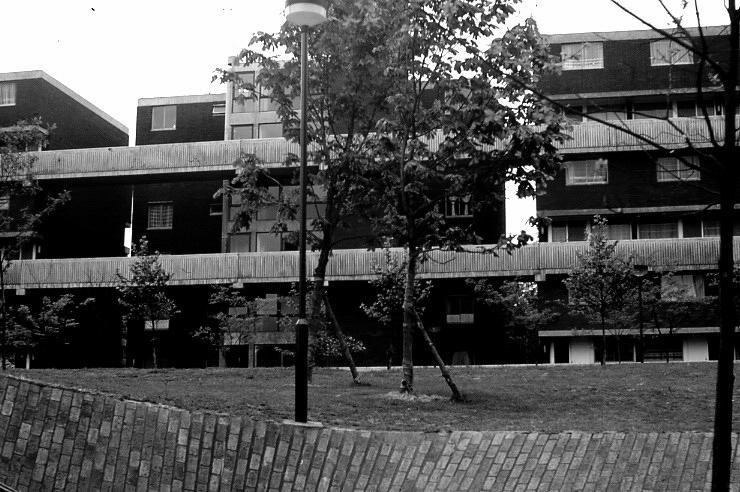
In the early 1970s semi-mature trees were becoming available for planting but few designers were specifying them. On projects where vandalism was likely to be high Michael Brown used predominantly semi-mature trees. The quality of trees was poor compared to now, but most of them survived well and grew well (the dead one on the extreme right of the photo above was replaced under guarantee).
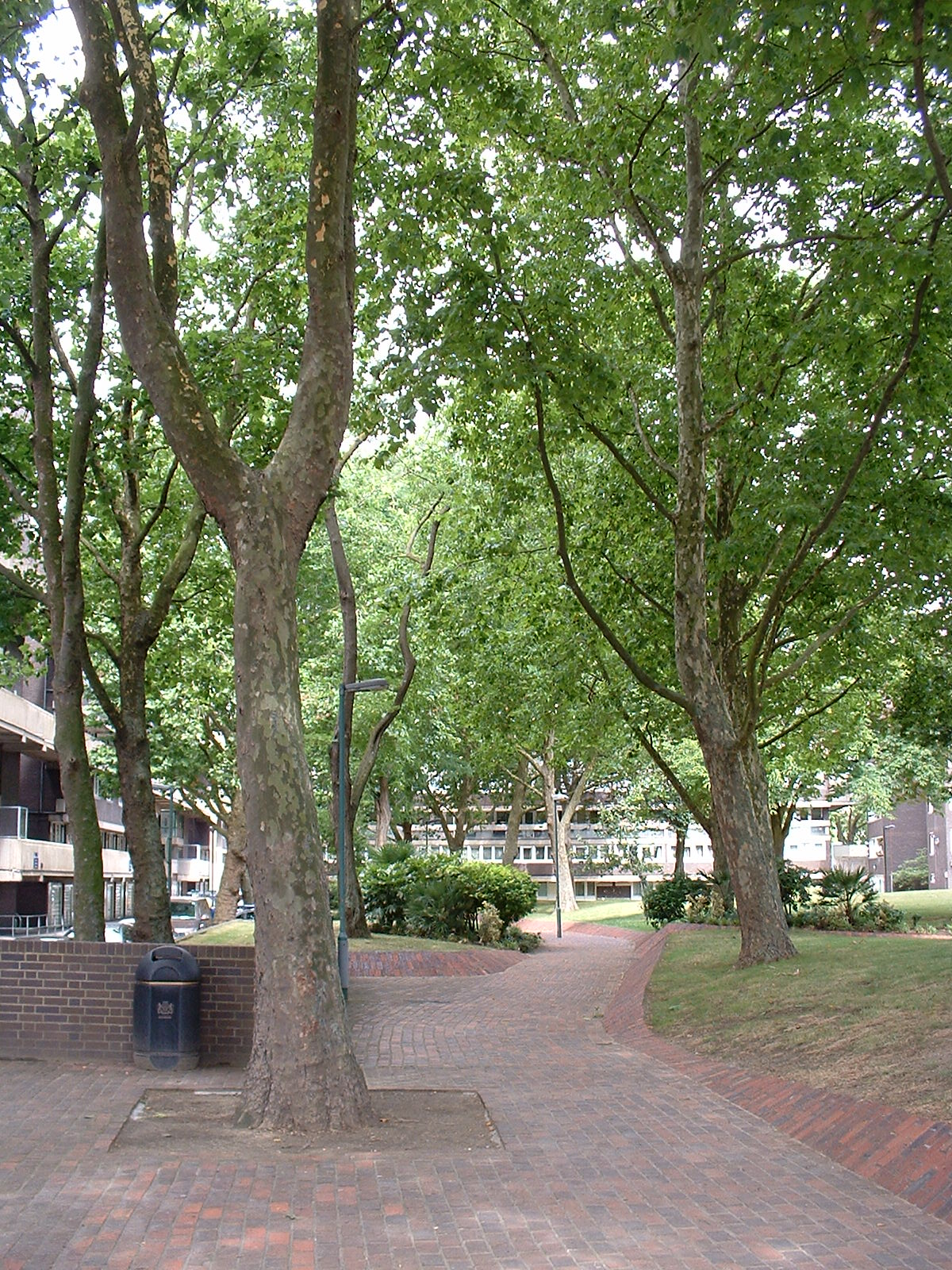
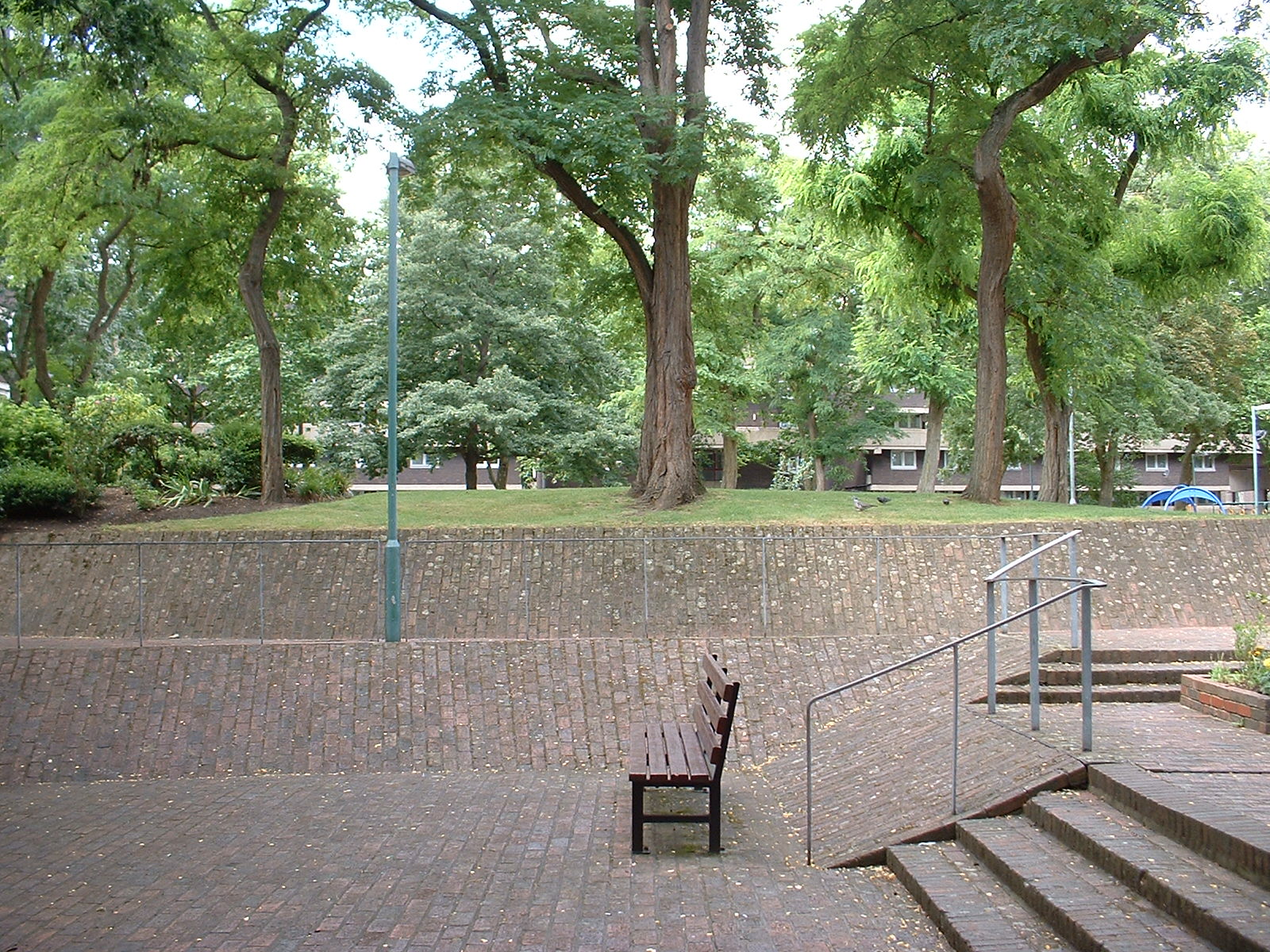
The above photograph was taken from the square area (surrounded by brick slopes) in the middle of the bottom of the plan below, looking towards the left to the treed grass area. The plan is not the as-built or construction drawing as demonstrated by the steps to the right of the photograph where the plan shows a ramp. However, the drawing is detailed in showing detail references (in circles), levels, ramps, steps, brick slopes, paving materials, contours on the grass areas, tree positions (squares variously shaded to denote the size of tree). Interestingly it is all drawn freehand without a straight edge (just using millimetre gridded paper beneath the tracing paper to ensure accuracy of the drawing).
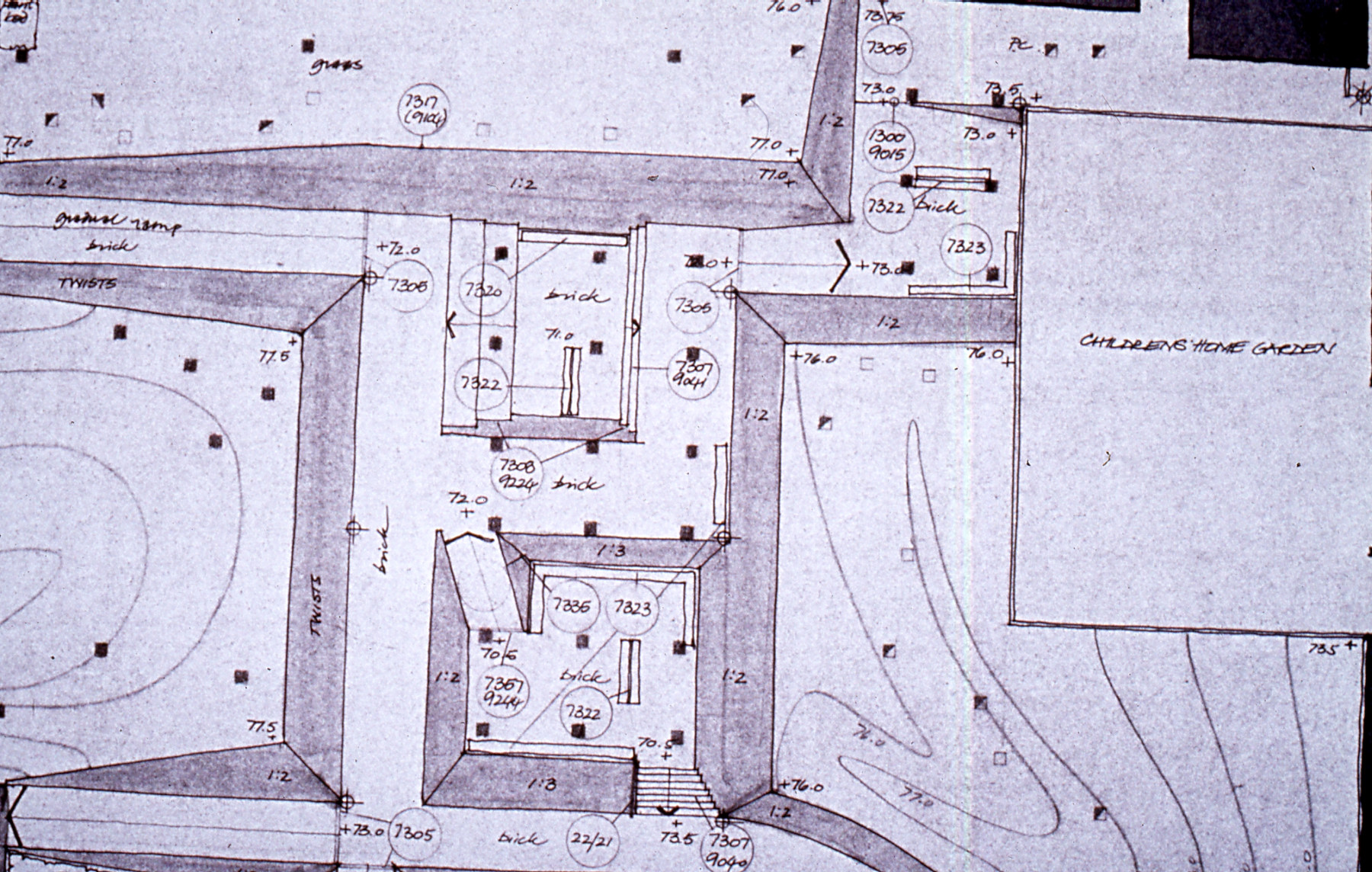
Michael Brown Partnership developed a comprehensive range of standard details which were used for many of the elements of many projects. The brick detailing (particularly the brick slopes) became the practice’s trademark, enabling Michael’s schemes to be easily recognised. This identity was reinforced by the limited pallet of favoured plants (predominantly Platanus x hispanica, Robinia pseudoacacia, Rhus glabra/typhina, Amelanchier canadensis, Vinca minor, Hypericum calycinum).
The repeated use of standard details also enabled continuous improvement from experience as well as modification for particular circumstances and increasing complexity in the detail.
The standard detail drawing below shows axonometric and plan drawings of different edge details for two different steps designs; ie edge details of brick slope (ref 9224) or wall (ref 9301) or edge slopping with nosings (ref 9300); for brick steps and steps with brick risers and slab treads.
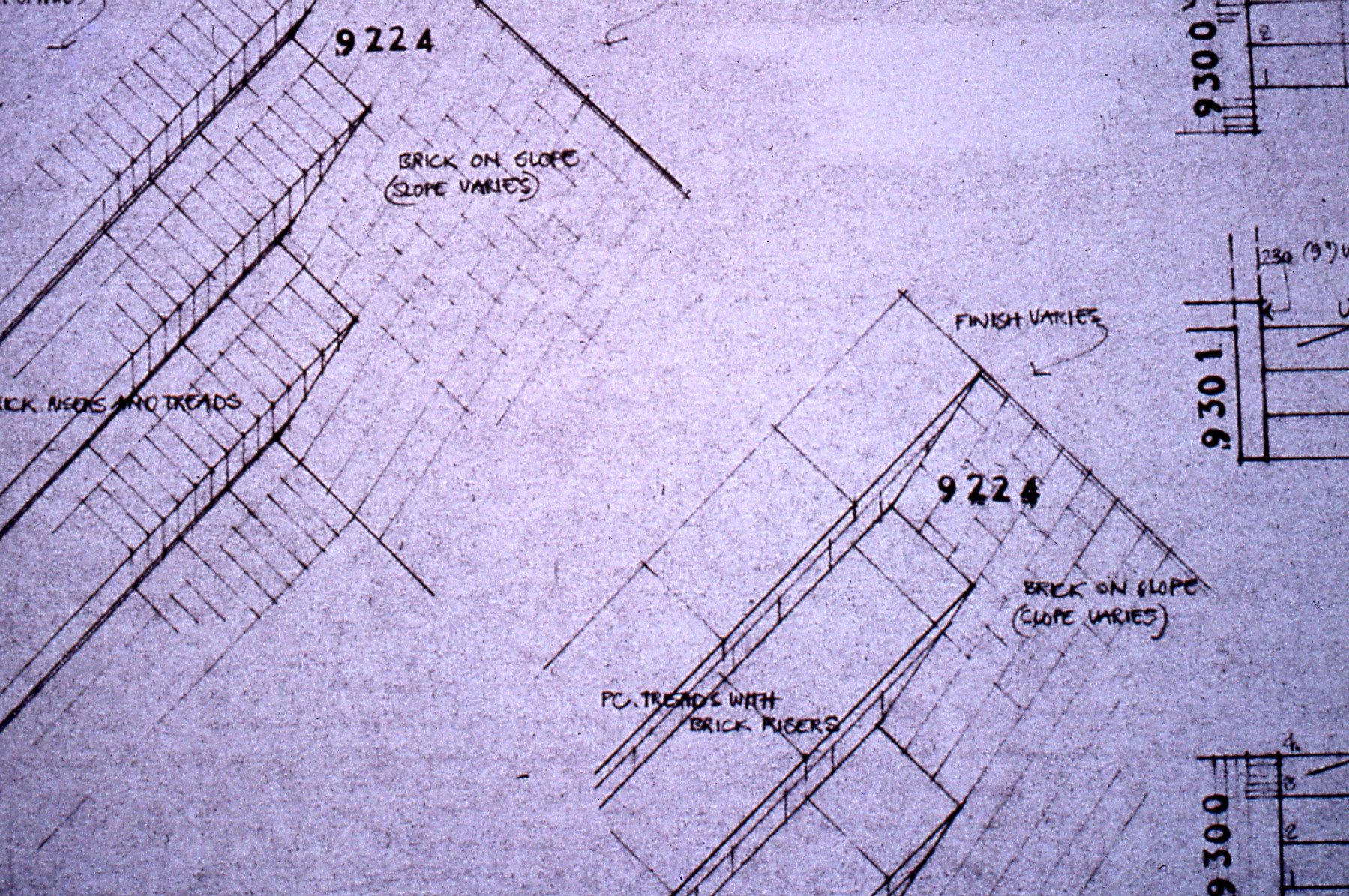
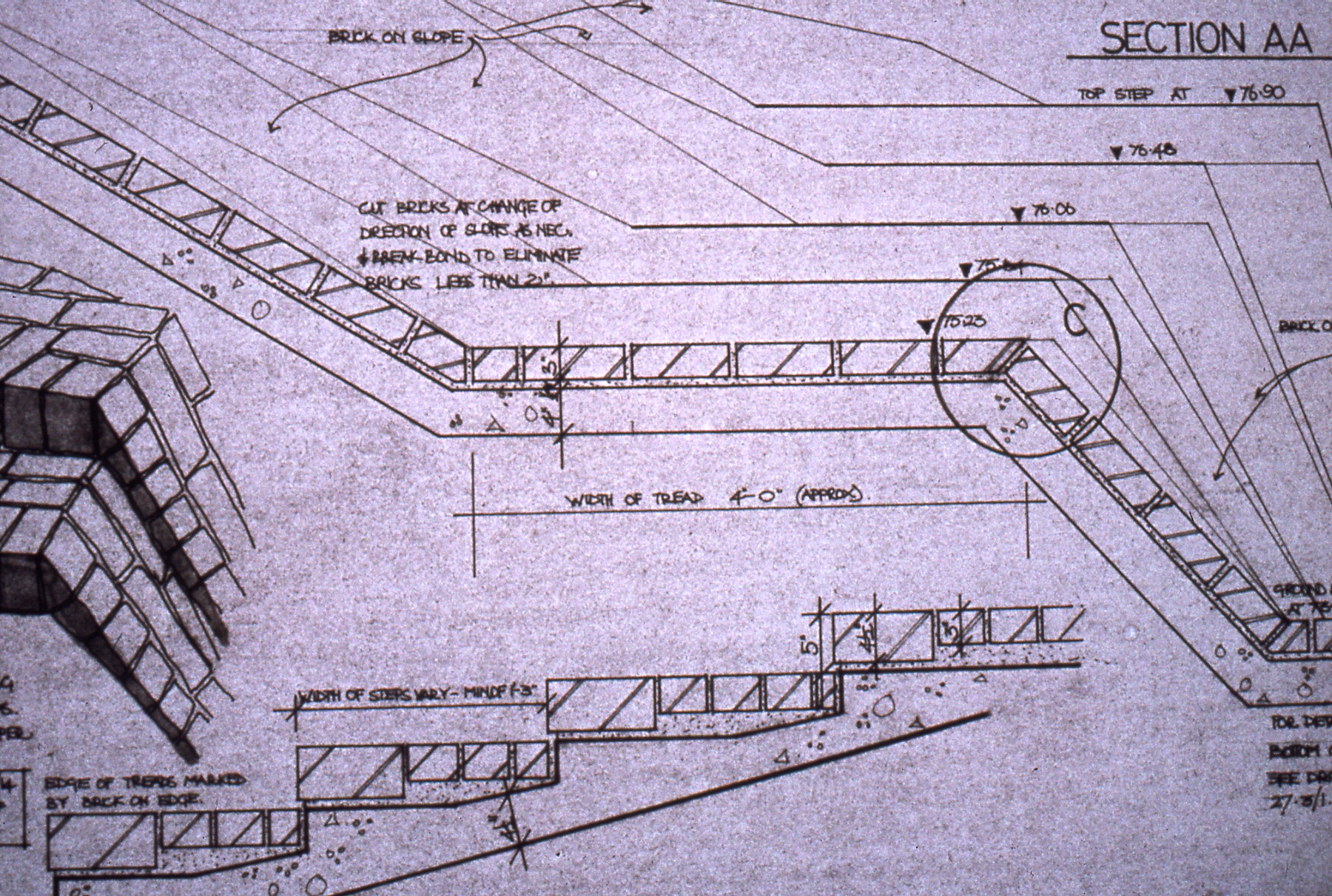
Increasing complexity is evident in the above project specific detail for Brunel Estate which shows cross sections across and up a flight of steps of varying tread lengths (normally unacceptable) and an axonometric to show a junction… But the next photo shows it as-built.
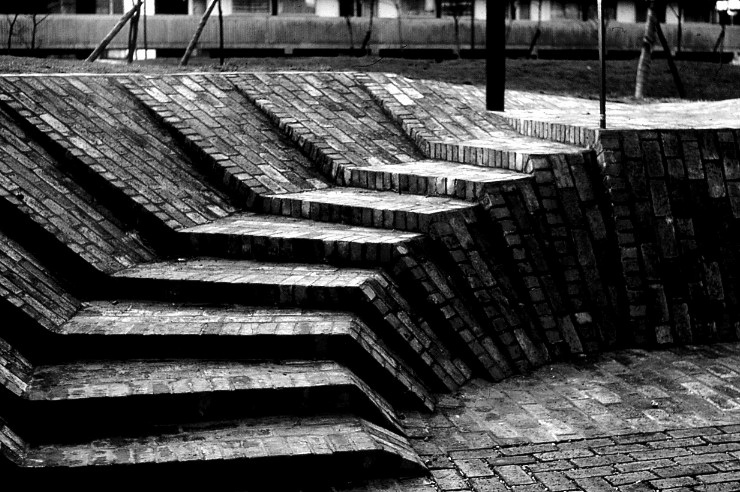
In his article in Landscape Design (August 1974, vol. 107, pp. 34-36) Michael described this play area as “… sunken below the general grass level to reinforce enclosure to the space, minimise wear on grass areas where these are adjacent and reduce noise nuisance. The battered slopes and changes of level nevertheless enable the children to reach the grass areas whilst still being reasonably under control without the need for any fence or barrier”.
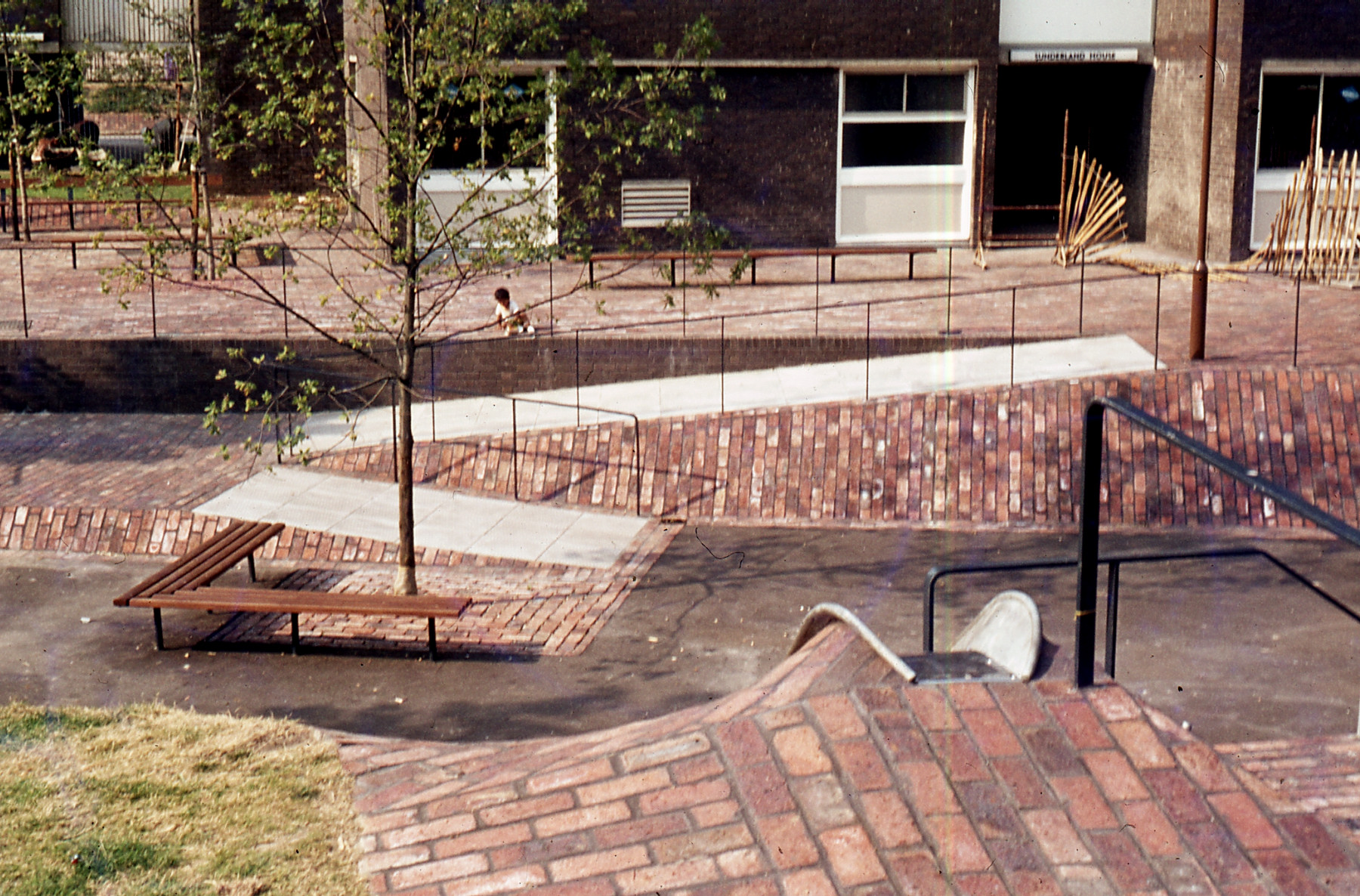
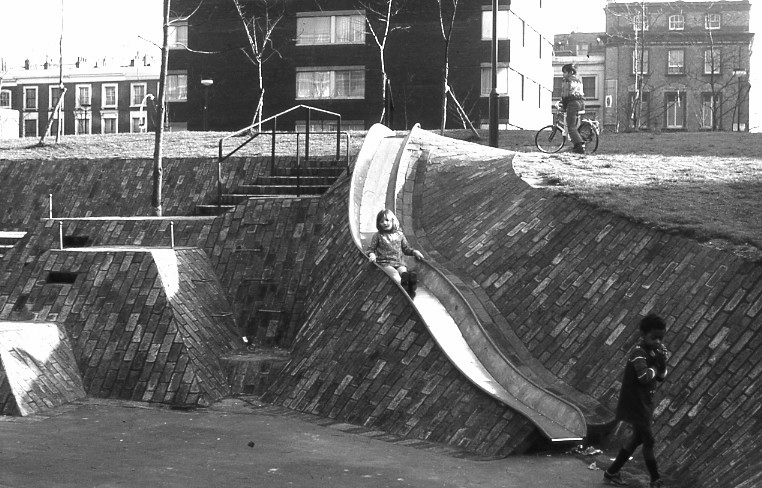
This play area for younger children was originally beside a One O’clock Club. It has been replaced with a new play area, including substantially filling it to the level of the top of the head of the child on the slide. But, as shown in the photograph below, the brick slopes above that level to the rear and right of the photograph were retained and, where the steps and slide were removed, remodelled with matching brickwork to marry in to the original slopes. A bowtop railing has been added around the area.
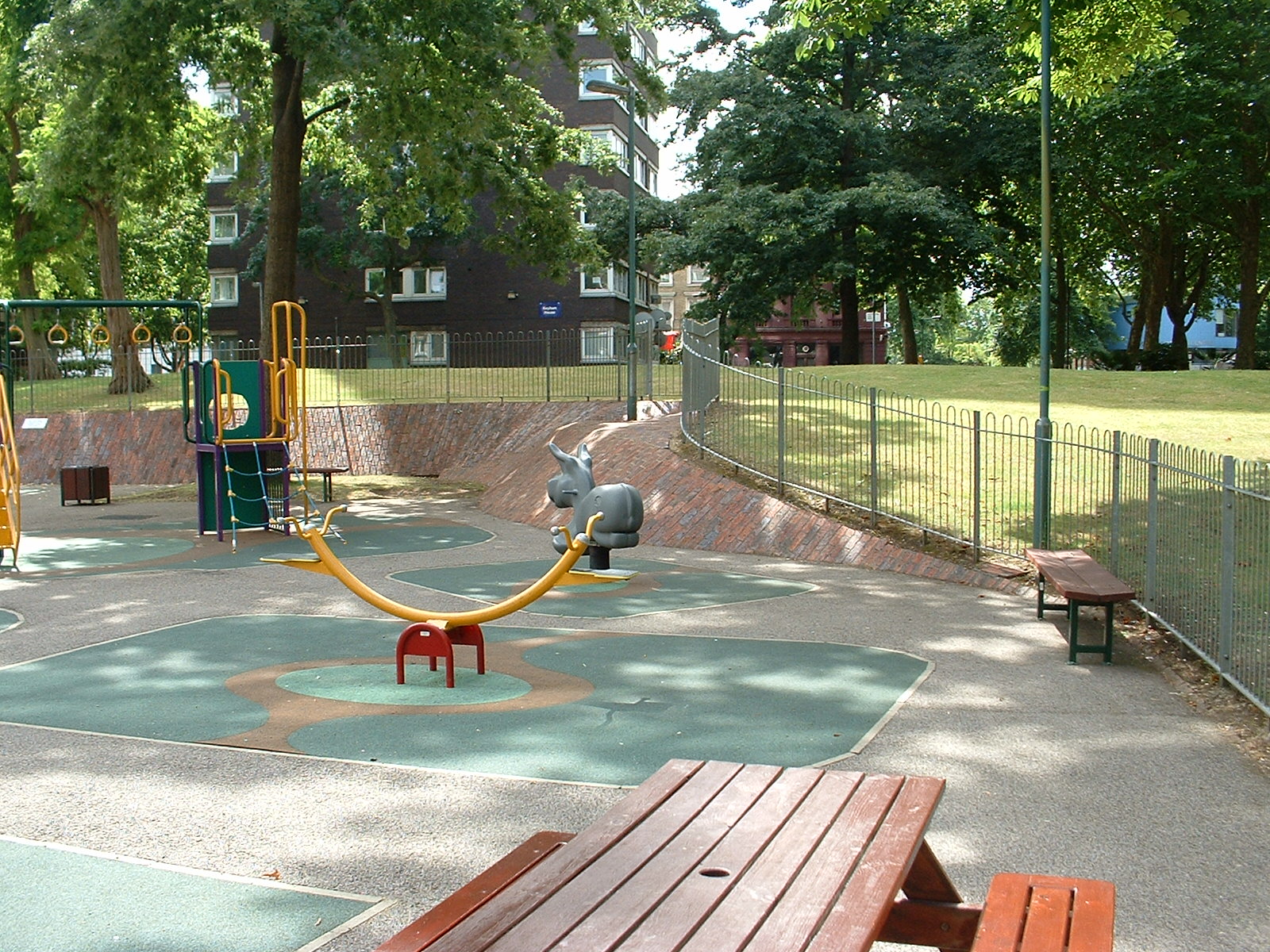
Find out more about Michael Brown
We would like to hear from you, particularly if you had/have any connection with the Brunel Estate or Michael Brown. Please contact us!
4 thoughts on “Brunel Estate Landscape: The essence of Michael Brown”
Leave a Reply
You must be logged in to post a comment.

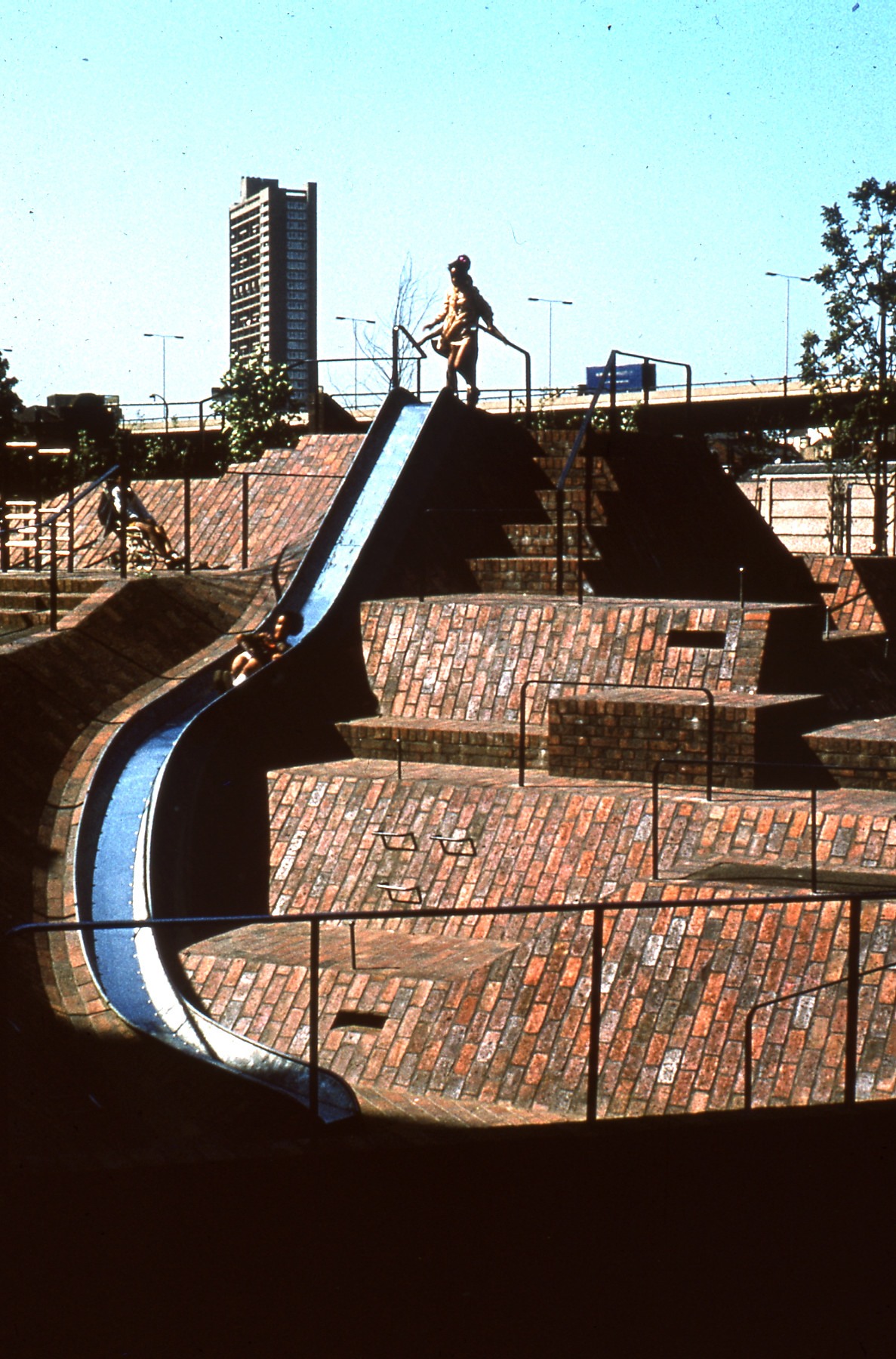
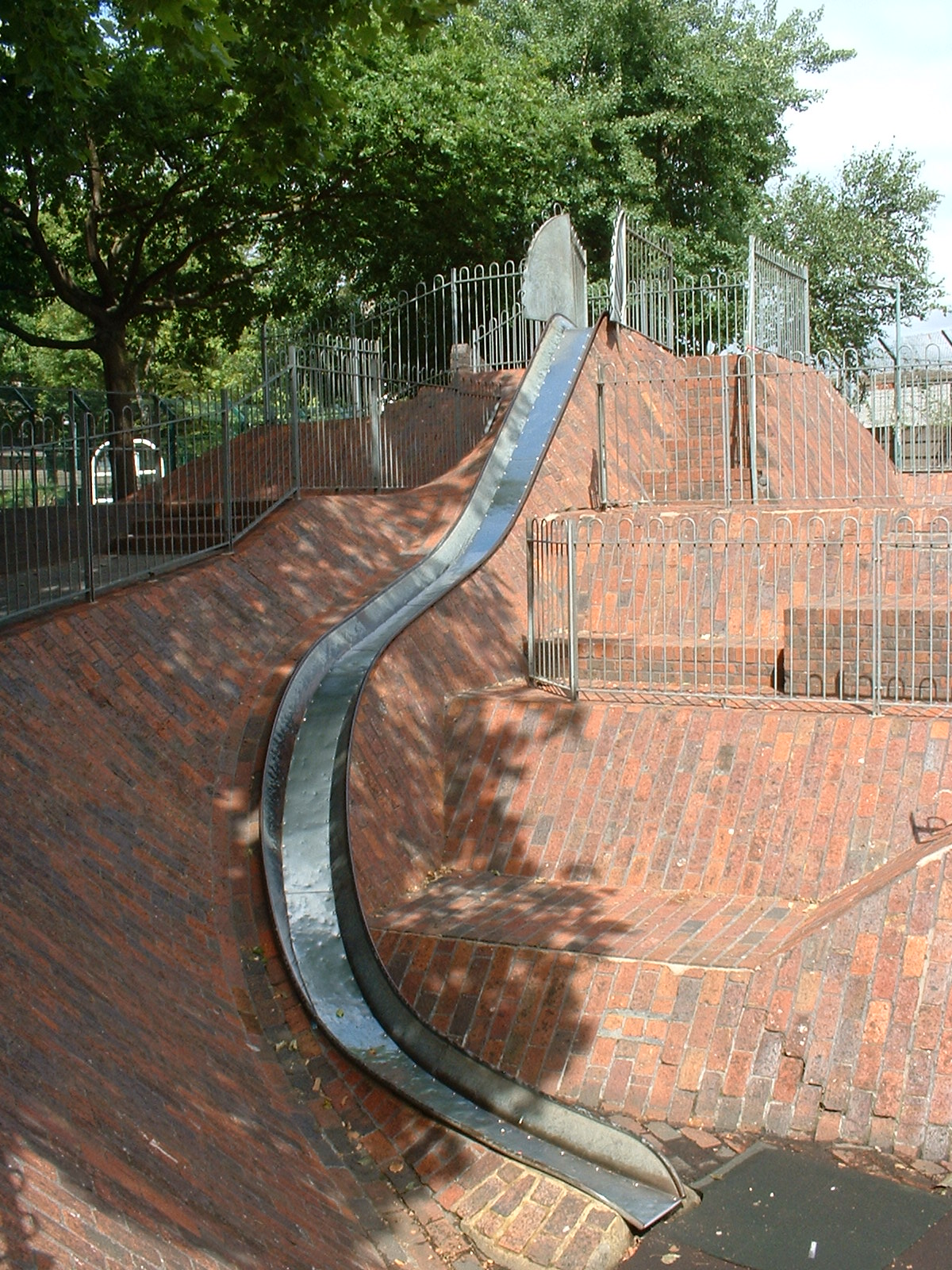
Excellent details. I had copies of many of his detail drawings and used them on some my projects. Imitation is the sincerest form of flattery, as they say!
I worked for Michael for 3 and a half years in the early 70’s and worked in both his Richmond offiices on a whole variety of projects. I was the project architect (or at least one of them) for the Brunel estate esp the first phase along the rail tracks. I am still in touch with some of my colleages; it was like a family and great fun to work there.
Michael was a formative influence on my career and introduced me Ecology, then hardly on the radar, and to Ian Mc Harg Michael’ s tutor in the States I believe.
As well as the brick slopes, ‘brick on slope’ as we called it , I think the sensual ground modelling of the soft landscape areas , grading’as it was called, has not been as widely recognised or indeed emulated as it should have been. I remember well drawing the contours using french curves and sometimes freehand to get just the desired forms.
I have some material from these times if anyone is interested please get in touch. I am not sure if there is a Michael Brow monogaph, there certainly should be. Mike Elam 28.12.2020
Mike, I am doing a talk on the Brunel Estate landscape on 9 November and I would like to make contact with you. Please email info@folar.uk as soon as possible to establish contact. Thanks. Colin Moore